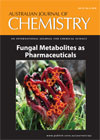
Australian Journal of Chemistry
Volume 67 Number 6 2014
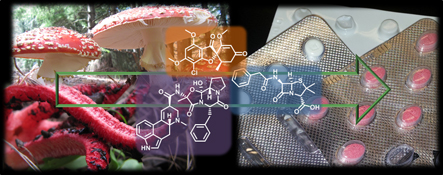
This review highlights pharmaceuticals currently used in Australia and New Zealand that have their origins in fungal metabolites, discussing the natural products chemistry and medicinal chemistry leading to their application as pharmaceuticals.
CH13574Alloying Buffer Layers in Colloidal CdSe/ZnS Core/Shell Nanocrystals
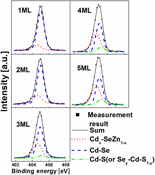
When ZnS shell is overcoated onto CdSe core, some nonradiative defects are formed. The X-ray photoelectron analysis reveals that these defects are induced from the formation of interfacial alloy during the epitaxy process. These defects could be significantly suppressed if the ZnxCd1-xSeyS1-y alloy buffer layer is artificially introduced.
CH13650Highly Improved Electrooxidation of Captopril on Copper Hexacyanoferrate/Ordered Mesoporous Carbon-Modified Glassy Carbon Electrode
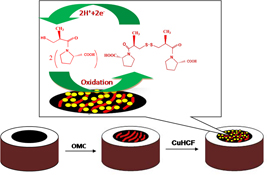
A combined copper hexacyanoferrate (CuHCF) and ordered mesoporous carbon (OMC)-modified glassy carbon electrode was prepared using electrodeposition techniques. The modified electrode had favourable and highly improved electrocatalytic abilities towards captopril.
CH13663Effects of Different Phases of Cigarette Smoke on Lipid Peroxidation and Membrane Structure in Liposomes

Liposomes are subjected to the gas phase and particulate matter of cigarette smoke, a rich source of free radicals. The lipid peroxidation therein is examined and discussed in terms of reaction intermediates and products. In addition the membrane structure is studied by electron spin resonance spectroscopy using spin probes.
CH13663 Abstract | CH13663 Full Text | CH13663PDF (1.1 MB) Open Access Article
CH13586An Efficient and Convenient Approach for the Synthesis of Novel Pyrazolo[1,2-a]triazole-triones and Evaluation of their Antimicrobial Activities

A series of novel 7-aryl-2-phenyldihydropyrazolo[1,2-a][1,2,4]triazole-1,3,5(2H)-triones have been synthesised using a multicomponent approach. These derivatives were evaluated for their antimicrobial activities, some of which demonstrated good antibacterial and antifungal activities.
CH13549Synthesis of Silicon and Germanium Nanowire Assemblies by Template-Assisted Electrodeposition from an Ionic Liquid
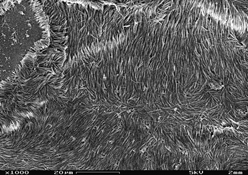
Assemblies of silicon and germanium nanowires have been deposited from ionic liquids by the help of nanoporous membranes.
CH13660Thermal Decomposition of Diethylketone Cyclic Triperoxide in Polar Solvents

The DEKTP thermal decomposition mechanism in polar solvents was studied and the products of the reaction support a radical mechanism.
CH13566Syntheses, Structures, Characterisation, and Spectroscopic Properties of CuI and AgI Complexes with Extended C–H···π and π···π Interactions
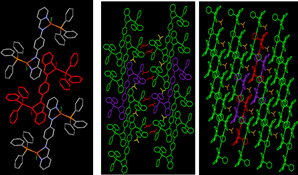
Three metal complexes, [Cu2(pmb) (PPh3)2(Cl)2] (1), [Cu2(pmbb)(CH3CN)2(PPh3)2](BF4)2·2DMF (2), and [Ag2(pmbb)(PPh3)2] (ClO4)2 (3) have been synthesised and characterised. Each complex formed a supramolecular self-assembly, governed by C–H···π and π···π interactions.
CH13630Construction of Lanthanide–Organic Frameworks from the Flexible Bifunctional Ligand 1,3-Bis(2-cyano-4-pyridyl)propane
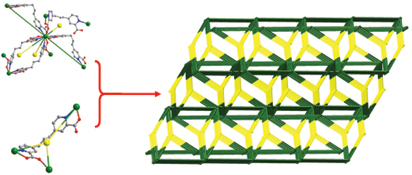
Four isostructural 3D lanthanide frameworks with (3,5)-connected (4·6·8)(4·65·83·10) topological motifs have been isolated by use of a bifunctional ligand. Further, all the polymers show similar thermal behaviour and polymer 1 exhibits an intense characteristic red europium emission in the solid state.
CH13633Hydrothermal Synthesis, Crystal Structures, and Photoluminescent Properties of Metal–Organic Frameworks Derived from 3,5-Bis(benzimidazol-1-yl)pyridine and Dicarboxylic Acids
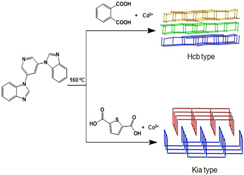
Two new coordination polymers were successfully constructed by employing 3,5-bis(benzimidazol-1-yl)pyridine and dicarboxylates. Complex 1 possesses a uninodal three-connected hcb Shubnikov hexagonal plane net with {63} topology. Complex 2 features a three-connected topological net with {82·10} topology, resulting in the formation of a rarely reported typical T-shaped molecular bilayer motif.
CH13622Mesoporous Carbon-supported Cu/ZnO for Methanol Synthesis from Carbon Dioxide
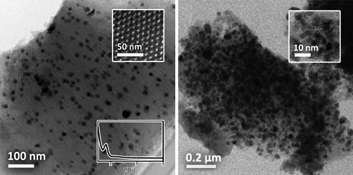
Well dispersed Cu–ZnO catalysts supported on mesoporous (FDU-15) carbon were synthesised. The novel catalysts were used to directly convert CO2 into methanol and displayed superior performance over a commercial catalyst in terms of activity and turnover frequency.
CH13711Novel and Simple Synthesis of Brominated 1,10-Phenanthrolines
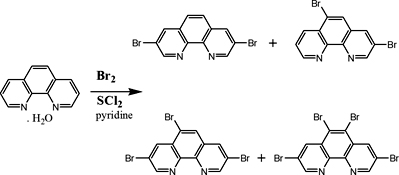
The novel synthesis of brominated 1,10-phenanthrolines, previously only synthesised by the complicated multi-step and tedious Skraup method, is reported herein. The 1,10-phenanthroline monohydrate is brominated in the presence of SCl2 and pyridine. The key role of a new catalyst (sulfur dichloride - SCl2) is reported.
CH13717Diffusion Studies of Phenylenediamine Isomers in Water-Monohydric-Alcohol Systems
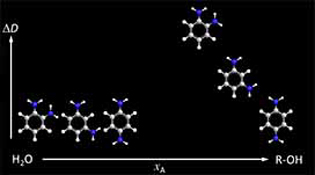
Nuclear magnetic resonance was used to measure the self-diffusion of phenylenediamine isomers in various water-monohydric-alcohol (i.e. methanol, ethanol, 1-propanol, and tert-butanol) solvents. It was found that the resonances of phenylenediamine isomers in a mixture were separable via diffusion, with the separation becoming greater at higher concentration of monohydric-alcohols.
CH13543A Simple Route to Prepare Zeolite Y Nanosheets with Hierarchical Perfoliate Pores
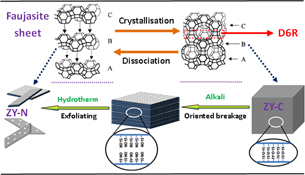
Using the high siliceous zeolite Y crystals (ZY-C) as precursor, zeolite Y nanosheets (ZY-N) with hierarchical perfoliate pores were successfully synthesised via a simple ‘top-down’ approach.
CH14029Reaction of 2-Pyridylmethylthiourea Derivatives with [(en)2Co(OSO2CF3)2]+ Induces Hypodentate Coordination of an Ethylenediamine Ligand
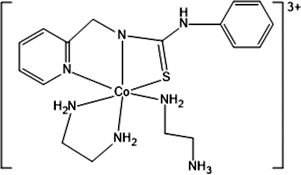
Pyridylmethylthiourea derivatives react with [(en)2Co(OSO2CF3)2]+, forming three coordination isomers. Bonding in a tridentate manner results in the formation of a hypodentate ethylenediamine ligand. Bonding only through the thiourea sulfur and thiourea nitrogen atoms forms two structural isomers, both of which contain ethylenediamine coordinated in the usual manner.
CH14021Influence of Chemically Inert Cations on the Hydrogen-bond Network in the Bray-Liebhafsky Oscillatory Reaction

The effects of different alkali sulfates on the Bray-Liebhafsky (BL) reaction dynamics are investigated by comparing the changes in the oscillograms provoked by the same amount of added sulfates. Larger cations have more impact on the BL reaction mechanism. As cations are not directly involved in chemical reactions, they may influence the reaction mechanism by changing the structure of the surrounding water and hydrogen-bond dynamics. The obtained results support the idea that the extent of water hydrogen bonding plays important role in the BL mechanism.
CH13654Regioselective Multicomponent Sequential Synthesis of Oxa-Aza[3.3.3]propellanes

The propellane skeletons occupy a privileged place in synthetic chemistry. Most of their synthetic processes are based on the introduction of a third ring on the framework of a fused bicyclic structure. However, only limited approaches to propellanes exist through multicomponent reactions. A sequential four-component approach to oxa-aza[3.3.3]propellanes has been developed.
CH13731Synthesis and Structural Characterisation of Palladium(II) Complexes with N,N′,N-Tridentate N′-Substituted N,N-Di(2-picolyl)amines and their Application to Methyl Methacrylate Polymerisation
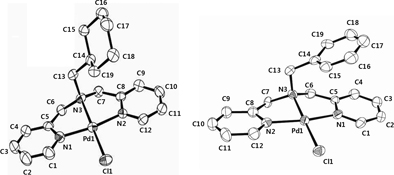
A new series of [(NN′N)PdCl]X (X = ClO4, Cl) complexes, i.e. mononuclear [LnPdCl]ClO4 (Ln = L1, L2, L3) and binuclear [L4Pd2Cl2]Cl2 containing N′-substituted N,N-di(2-picolyl)amine-based ligands were synthesised and characterised by X-ray crystallography. It showed that the co-ordination geometry around the palladium centre of all complexes was slightly distorted square-planar. The catalytic activity of the PdII complexes for methyl methacrylate polymerisation was investigated.



